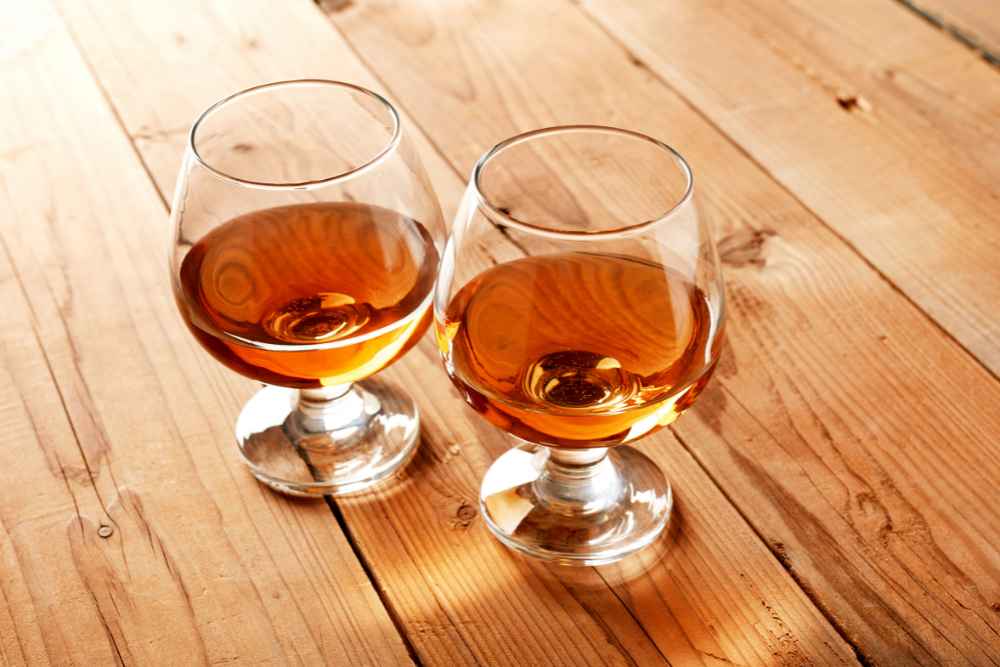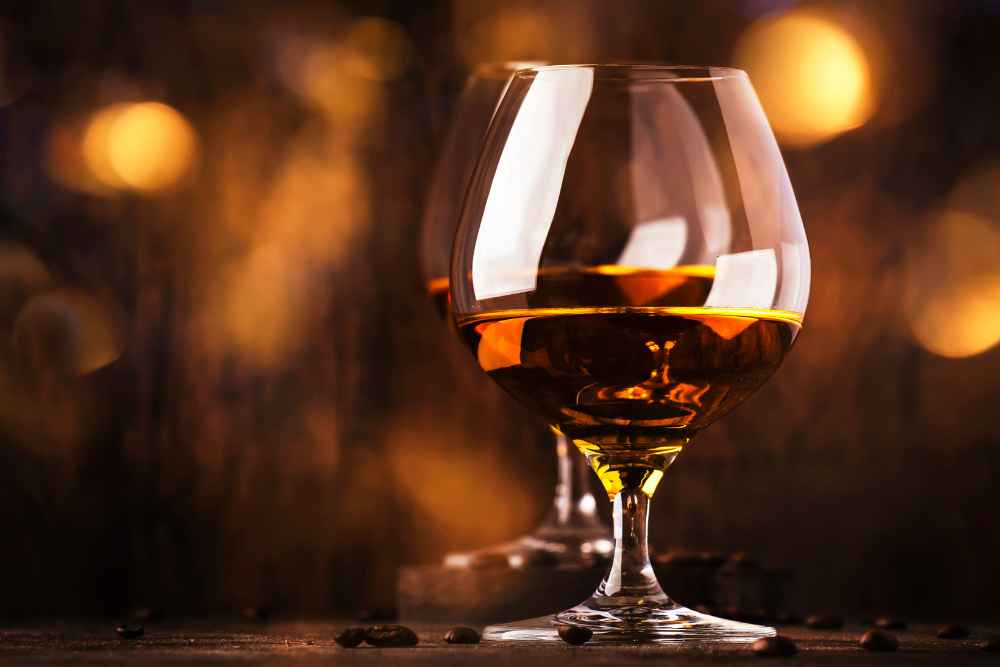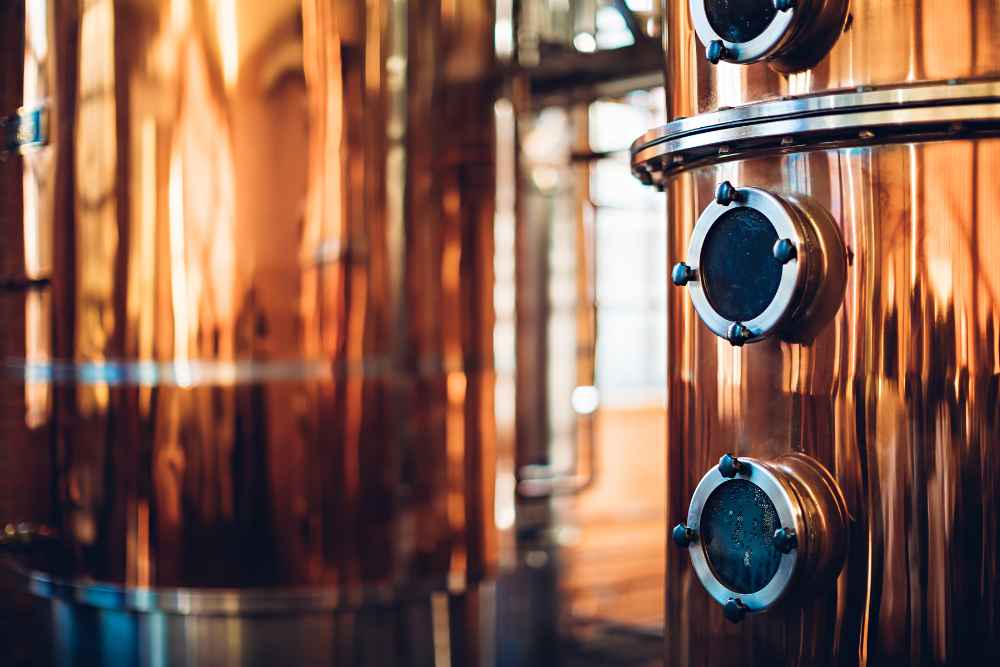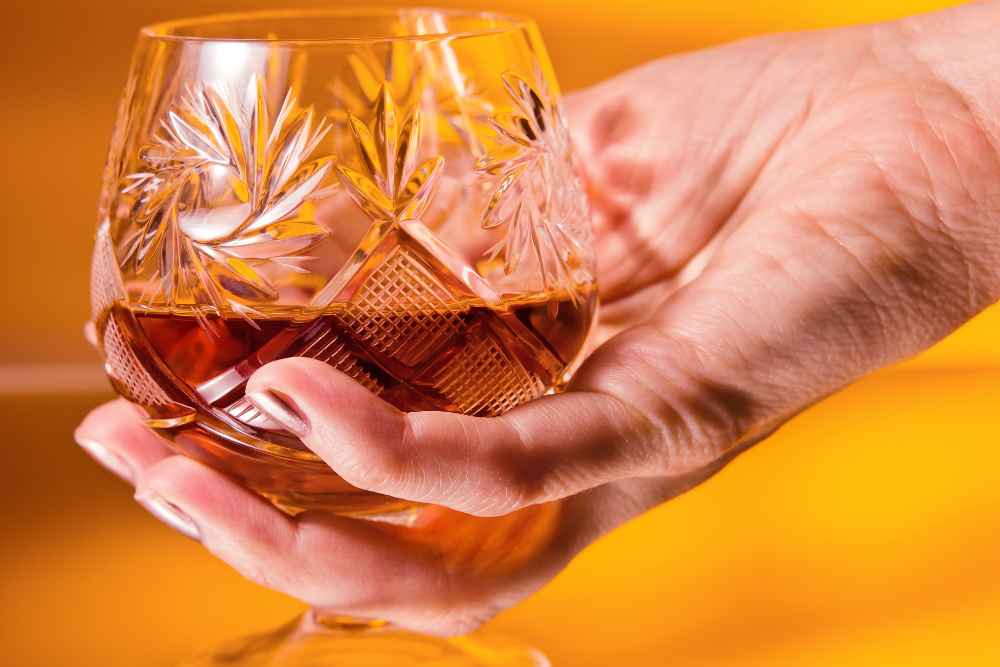This page may contain affiliate links. Please see our Disclaimer for more information. Always drink responsibly and adhere to your local legal drinking age.
Introduction
Welcome to the fascinating world of spirits, where today we dive into the subtle nuances and captivating distinctions between Armagnac vs Brandy. While both are grape-based brandies hailing from France, they offer unique flavor profiles and characteristics that set them apart.
This blog uncovers the mysteries behind their production processes, distinctive flavors, ideal serving suggestions, and much more – all while highlighting key differences between Cognac. We’ll cover everything from French brandy to vintage Armagnac, including Grande Champagne and even brandy cocktails.
Key Takeaways:
-
Armagnac and Brandy are grape-based French brandies, but Armagnac must come from the Armagnac region in southwest France.
-
One of the significant differences between these two spirits is their production process; Armagnac is distilled only once using pot stills. Brandy (especially Cognac) undergoes double distillation with a pot still or column still.
-
Armagnac typically includes up to ten different grape varietals, such as Baco Blanc, Folle Blanche, and Colombard, resulting in a fruitier taste profile than Brandy’s more subtle complexity. The aging requirement for Armagnacs is slightly less stringent than for Brandies.
Brandy Vs Armagnac
Brandy is a grape-based spirit with varying ABV levels that can be produced by various producers worldwide. However, Armagnac, which has a distinct cinnamon flavor, must come from the Armagnac region in southwest France and is often associated with the Château de Lacquy.
What Is Brandy?

Brandy refers to a spirit made from the distillation of wine or fermented fruit juice, with its name originating from the Dutch word “brandewijn,” which means “burnt wine.” It is a versatile and popular drink that can be enjoyed neat, on ice, or in various cocktails.
A critical factor contributing to brandy’s flavor profile is aging time – the longer it matures, the smoother and more refined it becomes. Grape varieties used in production also play a significant role in determining the final taste. For example, Bas Armagnac, made from the Folle Blanche grape variety, has a distinct cinnamon flavor. Additionally, ABV (alcohol by volume) levels can affect the intensity of the taste. Some French producers follow strict rules defining categories like VS (Very Special), designating a minimum age of two years for their product.
What Is Armagnac?

Armagnac, a type of French brandy, hails from the Armagnac region in Gascony and is known for its distinct characteristics and rich history. Often considered more complex than its cousin cognac, Armagnac offers cocktail drinkers an enticing blend of flavors and aromas that make it incredibly appealing when mixed into beverages or consumed neat.
While Armagnac and cognac share some similarities due to their French origin and production processes as grape-based brandies, some distinctions set them apart. These brandies can be used in classic brandy cocktails, have different ABV levels and tasting notes, and are typically sold in 750 ml bottles.
For instance, Armagnac has a lower alcohol content than cognac because it undergoes single distillation rather than double distillation typically used in producing cognacs.
Additionally, the aging requirement for Armagnacs is slightly less stringent; they need only age for one year to reach the VS (Very Special) designation.
Differences In Production
The production of Armagnac and Brandy involves distinct methods that contribute to their unique qualities. One key difference lies in the distillation process; while Armagnac is typically distilled only once, using a column still, Brandy (particularly Cognac) undergoes double distillation with a pot still. It is important to note that the bas of the column still used in Armagnac production also plays a significant role in the final product’s flavor profile.
Another notable variation between the two spirits can be attributed to their respective regions’ terroir – the environmental factors such as soil type and climate that affect grape cultivation. Armagnac producers carefully select grapes with the right notes to create exceptional bas Armagnac. Aged for years, a 10 yo bas armagnac offers distinct flavors unique to the region’s terroir.
For instance, grapes used for cognacs are primarily harvested from limestone-rich soils found in the Charente region near Bordeaux. In contrast, grapes used for Armagnacs grow on sandy or clay soils bathed by Gascony’s temperate weather. Notes of bas and yo can be detected in cognacs and Armagnacs, respectively.
Differences In Aging
Armagnac and Brandy differ in their aging processes. It is usually aged longer than Brandy, as more time is needed to achieve its desired flavor profile. While both spirits are typically aged in oak casks, Armagnac spends more time maturing and developing in the wood, resulting in deeper bas notes.
VS refers to Armagnacs that have been aged in oak casks for two to three years, while VSOP refers to Armagnacs that has been aged for four to six years. The highest quality classification of Armagnac is XO or Hors d’Age, which requires a minimum of ten years of barrel aging before bottling it. These different aging periods provide distinct notes in Armagnac’s flavor profile.
In contrast, Brandy is not always aged as extensively as Armagnac, with some brands marketed as “unaged” varieties while others are matured in barrels ranging from several months up to 20 years or beyond. However, notes of vanilla, caramel, and oak can still be detected in some varieties.
Aging bas Armagnac also affects the ABV (Alcohol by Volume) content with prolonged contact with the wood leading to alcohol evaporation resulting in a lower ABV over time. Additionally, notes of the wood may also develop and enhance the flavor profile.
Differences In Grape Varietals
One of the significant differences between Armagnac and Brandy is the grape varietals used in production. While Cognac typically only uses Ugni Blanc grapes, Armagnac allows for up to 10 different varieties, including Baco Blanc, Folle Blanche, and Colombard.
These grape varietals contribute to the unique flavors and aromas found in Armagnac. For example, Baco Blanc grapes bring a fruity flavor with notes of apricot, while Folle Blanche grapes are known for their fresh mint aroma.
In contrast, Ugni Blanc grapes provide a more neutral base ideal for aging in oak barrels.
Flavor Profile And Characteristics
Armagnac and brandy are grape brandies that differ significantly in flavor profile and characteristics. Armagnac has a diverse array of grapes compared to brandy, giving it a wide range of fruit flavors.
For instance, the Baco Blanc grape creates an apricot-like aroma, while Folle Blanche brings out notes of fresh mint. These flavors are commonly found in bas Armagnac.
On the other hand, Brandy is known for its subtle yet complex flavor profile due to its aging process in oak barrels. It often features hints of vanilla, caramelized sugar, or chocolate with delicate notes of dried fruits like figs or prunes.
Overall, if you’re looking for a fruity and aromatic drink that packs a punch with distinct notes, Armagnac is your best bet. At the same time, Brandy provides a mellow sipping experience with rich complexity and depth of notes.
Production And Distillation Process Of Brandy And Armagnac

Brandy and Armagnac are produced through a distillation process using grapes, but the techniques used differ significantly. It is important to note that these two spirits have distinct flavor notes and aromas due to variations in their production methods.
Brandy Distillation
Brandy is a spirit made from distilling wine. The process of brandy distillation involves heating the wine in a still, causing the alcohol to evaporate and separate from other components like water and flavor compounds. If you’re looking for a top-notch brandy, consider bas armagnac, which has distinct notes that set it apart from other varieties.
The resulting vapor is then condensed into liquid form, with the distilled spirits having a higher alcohol content than the original wine. The process is commonly used in the production of bas armagnac, which is known for its distinct notes.
However, Armagnac is unique because it’s only distilled once, allowing more flavors and notes to be retained from the original wine. As a result, Armagnac has a distinctive taste profile compared to its counterparts, such as Cognac, which are double-distilled twice through column stills or pot stills, ensuring uniformity, unlike Armagnac, which results in some variability year by year due to this production process difference.
Armagnac Distillation
Armagnac is distilled in a very traditional way using pot stills, which gives the spirit a much richer and more layered flavor with distinct notes than other brandies. The grape varietals used for Armagnac are typically Ugni Blanc, Colombard, Baco Blanc, and Folle Blanche.
After fermentation and distillation, the liquid is aged for at least two years in oak barrels to develop its complex aromas and flavors. During maturation, the cellars’ temperature can affect the aging process by causing evaporation or oxidation – this is known as “the angel’s share.” Unlike Cognac production where double-distillation is used, Armagnac undergoes only one distillation process that leaves behind some of the original wine’s character giving it an intense fruit flavor profile.
Aging Requirements And Maturation Process
Armagnac and brandy undergo a unique aging process contributing to their distinct flavor and aroma. Brandy is aged in oak barrels for at least two years, while Armagnac must be aged for at least one year to reach the VS classification.
Further, aging can lead to higher classifications, such as VSOP and XO, often bringing out unique and complex notes. The type of barrel used also affects the final product; Limousin oak is commonly used for cognac maturation, while Gascon oak is used for Armagnac, imparting distinct notes to the spirits.
During the maturation process, Armagnac is aerated, which encourages evaporation and concentration of flavors. This results in a richer, fruitier taste with notes of oak, vanilla, and spice than the brandy’s smoother profile.
In summary, Armagnac and brandy’s aging requirements contribute significantly to their unique profiles, with distinct notes of oak, vanilla, and fruit developing over time.
Key Differences Between Armagnac And Brandy

Armagnac and Brandy have key differences in production, aging, grape varietals used, flavor profile, regional restrictions, and tasting notes.
Regional Differences And Legal Restrictions
Armagnac and Cognac may be similar in many ways, but significant regional differences and legal restrictions set them apart.
For example, Armagnac can only come from the Armagnac region in Gascony, southwest France, while only a Wine Brandy produced in the Cognac region can be called Cognac.
These regions differ significantly regarding terroir or soil characteristics and geography unique to each area. In addition to different grapes used for production, cognac producers rely mainly on limestone soils, while Armagnacs have diverse arrays of terroirs with variations like sandstone or clay-limestone. It is worth noting that the notes of each spirit also vary depending on the terroir they come from.
Terroir And Soil Characteristics
Both Armagnac and Brandy are products of the earth, heavily influenced by the soil and climate in which their grapes grow. In Cognac, vineyards are limited to six permitted crus, each with a unique soil composition.
The Grande Champagne cru, known for its chalky soil, is widely regarded as the optimal terroir for creating cognac. Also, bas armagnac, another notable region for producing brandy, has unique notes.
The differences in terroir and soil characteristics directly impact each product’s flavor profile. Bas Armagnac, for instance, has distinct notes that vary depending on the type of soil it was produced from. Cognacs from chalkier soils are floral or fruity, while those from clay-rich soils are earthy or spicy.
On the other hand, Armagnacs produced on sandier soils tend towards subtle fruit flavors like apricot or peach with hints of fresh mint because they’re made mainly from the baco blanc grape variety.
Aging And Barrel Maturation
One of the key differences between Armagnac and Brandy lies in their aging and barrel maturation process. While both spirits are aged in oak barrels, the type of oak used differs between them.
Cognac is typically aged in Limousin or Tronçais oak barrels, while Armagnac can also be aged in Gascon oak barrels.
The age grading for Armagnac refers to the number of years it has been aged in oak casks, with VS indicating two to three years, VSOP indicating four to six years, XO indicating at least ten years, and Hors d’Age (beyond age) indicating a minimum of 10 years but often much older.
On the other hand, brands like Hennessy have popularized cognacs that feature specific ages, such as VS or Very Special (aged for at least two years), VSOP or Very Superior Old Pale (aged for at least four years), and XO or Extra Old (aged for at least six years). Bas Armagnac, another type of aged brandy, is also gaining popularity among connoisseurs.
Grape Varietals Used
Armagnac and Brandy differ in the grape varietals used during production. Armagnac uses three additional grape varietals: Folle Blanche, Colombard, and Baco Blanc, while Cognac typically only uses the Ugni Blanc grape.
Armagnac is made from 10 different grape varieties, including Ugni Blanc, which offers a unique collection of flavors that sets it apart from any other brandy.
The diverse array of grapes gives Armagnac a more robust fruit flavor than Cognac. Moreover, during distillation for Armagnac production, vapors are trapped inside to increase the intensity of aroma and flavor profile.
Both armagnacs and cognacs bring distinctive characters to classic cocktails like Sazeracs or sidecars. However, they can be enjoyed perfectly well on their own notes with all their aroma variations and flavor profiles due to differences in the grapes used.
Flavor Profile And Aroma

Due to differences in production processes, Armagnac and brandy have distinct flavor profiles and aromas. Armagnac boasts a more robust fruit flavor thanks to the diverse array of grapes used for its production.
This diversity offers a range of aromatics such as apricot, fresh mint, and even hints of figs.
Another key factor contributing to Armagnac’s unique aroma is the trapping of vapors from distillation inside the spirit during maturation. Over time these trapped vapors create depth and complexity, giving rise to rich notes like nuts or spices while retaining underlying fruity undertones.
For those who appreciate intense fruity flavors with complex fragrances that gradually evolve- Armagnac might be an excellent choice, whereas Brandys offer versatility with different types branded based on sweetness levels – such as VSOP (Very Superior Old Pale), which had less than ten years old barrels’ minimum age – offering a wide variety suitable for everyone’s taste buds.
Serving And Pairing Armagnac And Brandy
To fully appreciate the distinct flavors of Armagnac and Brandy, it’s essential to serve them at the right temperature in appropriate glassware and pair them with complementary foods – read on to discover some serving tips that will help you get the most out of each sip.
Glassware And Serving Temperature
Armagnac and Brandy are best enjoyed when served in the proper glassware and at the perfect temperature. Here are some tips on how to serve Armagnac and Brandy:
-
Glassware: Armagnac and Brandy are typically served in a tulip-shaped glass or a snifter. These glasses help to concentrate the aroma, making it easier to appreciate the complex flavors of the drink.
-
Serving Temperature: Room temperature is best for Armagnac as it allows all the flavors to come out. Brandy can be slightly chilled but not ice-cold, as this will dull the flavors. Experts recommend serving brandy between 55-65°F (12-18°C) for optimal taste.
-
Warm up your glass: Before pouring Armagnac or Brandy into your glass, hold it in your hand or place it under hot water for a few seconds. This helps to intensify the aromas of the drink.
-
Don’t add ice: Ice can dilute the flavors of Armagnac and Brandy, so it’s best to drink them neat or just with a small amount of water.
-
Savor slowly: Take small sips and let each sip settle on your palate before swallowing. This will allow you to appreciate Armagnac and Brandy’s complex flavors fully.
Following these simple tips, you can enjoy your Armagnac or Brandy to its fullest potential!
Food Pairing Suggestions
Pairing Armagnac or Cognac with food can enhance the flavors of both the drink and the dish. However, it is essential to choose the right pairing for the occasion. Here are some suggestions:
-
Figs and Butterscotch: This classic pairing works well with Armagnac and Cognac.
-
Smoked meats: The smoky flavor of meats such as ham, bacon, or sausage complements the rich fruit flavor of Armagnac.
-
Blue cheese: The intense flavor of blue cheese contrasts with Armagnac’s sweetness.
-
Foie gras: The richness and creamy texture of foie gras pair perfectly with a premium quality Armagnac or Cognac.
-
Chocolate desserts: Dark chocolate enhances the dried fruit flavors in Armagnac, while milk chocolate pairs better with smooth and mellow Cognacs.
Remember that personal preference is significant when selecting a food pairing for your brandy. Experiment to find your perfect combination!
Choosing Between Armagnac And Brandy
Consider personal preference and the occasion when choosing between Armagnac and Brandy, as well as price and availability.
Personal Preference And Occasion
Choosing between Armagnac and Brandy depends on personal preference and occasion. Armagnac is more complex in taste, with a fruity flavor profile that may appeal to those who prefer bolder flavors.
The occasion also plays an essential role in deciding whether to opt for Armagnac or Brandy. For instance, Armagnac is an excellent after-dinner drink due to its robust and distinctive flavor.
In contrast, Brandy’s versatility makes it perfect for mixing cocktails like Sidecars and Manhattans – making it the go-to choice for cocktail drinkers experimenting with different recipes.
Price And Availability
The price difference between Armagnac and Brandy can vary greatly depending on various factors such as age, quality, and brand. Generally speaking, Armagnac is considered less expensive than its counterpart Brandy due to its lesser popularity.
This could also affect the availability of Armagnac outside of France as it may not be as readily available in certain areas compared to Brandy. However, for those looking for a high-quality grape brandy at an affordable price point, Armagnac could offer a more accessible alternative to Brandy.
Popular Brands And Varietals Of Armagnac And Brandy
Some of the most popular brands of Armagnac and Brandy include Hennessy, Martell, Remy Martin, Domaine de Tariquet, and Château du Tariquet.
Distilleries And Producers To Watch Out For
If you’re looking to explore the world of French brandy beyond Cognac, here are some Armagnac distilleries and producers to watch out for:
-
Domaine Tariquet – produces a range of Armagnacs, including VSOP and XO varietals.
-
Château du Tariquet – is known for its unique blends of several grape varietals, including Folle Blanche and Colombard.
-
Dartigalongue is one of the oldest Armagnac houses in Gascony, with a diverse array of aged and unaged offerings.
-
Arton – produces Armagnacs exclusively from estate-grown grapes and uses traditional distillation methods for a rich flavor profile.
-
Château de Laubade – has been producing premium Armagnacs since 1855 and offers aged varietals bottled at cask strength.
Each distillery or producer offers unique flavors and characteristics that make Armagnac an exciting alternative to other grape brandies. Explore these brands to find your perfect sipper or cocktail ingredient.
Most Popular Varietals Of Armagnac And Brandy
Armagnac is made from various grapes, while Brandy typically uses only one grape. Here are some popular varietals for both spirits:
Armagnac:
-
Baco Blanc
-
Ugni Blanc
-
Folle Blanche
-
Colombard
Brandy:
-
Grape brandy
-
Fruit brandy
-
Pomace brandy
Each varietal brings its unique flavor profile to the spirit, making each one distinct and enjoyable in its own way. Some popular brands of Armagnac include Darroze, Marquis de Montesquiou, and Chateau de Laubade. On the other hand, Hennessy is the most well-known Brandy brand.
Difference Between Cognac And Armagnac
Cognac and Armagnac are French brandies, but there are some key differences between the two. The main difference lies in their production method – while Cognac is double-distilled using a pot still, Armagnac only goes through one distillation.
The regions where these brandies are produced also have distinct characteristics that affect their taste. Cognac comes from a larger region just north of Bordeaux, whereas Armagnac is produced in Gascony.
These regions have different soil compositions and terroirs that influence the flavor profile of each brandy.
FAQ
1. What is the main difference between Armagnac and Brandy?
The main difference between Armagnac and Brandy lies in the region where they are produced, the distillation process, and the aging requirements. Armagnac is only produced in a specific area of France using column stills, while brandy can be made anywhere in the world using either pot or column stills.
2. Which one has a more robust flavor profile – Armagnac or Brandy?
Armagnac generally has a more robust flavor profile than brandy due to its long aging process, allowing it to develop deeper flavors from prolonged exposure to oak barrels.
3. Can I use Armagnac as a substitute for Brandy in cocktail recipes?
Yes, you can use Armagnac as a substitute for brandy in most cocktails that call for it. It may have a slightly different taste due to its distinctive flavor profile, but it works just as well, if not better, depending on your preference.
4. Is there any nutritional difference between drinking Armagnac and Brandy?
Armagnac and Brandy contain approximately 65 calories per ounce with similar alcohol content ranging around 40% ABV (alcohol by volume). Therefore, there isn’t much difference nutritionally between the two spirits when consumed responsibly in moderation, but always remember that excessive consumption of alcohol can lead to adverse health effects regardless of what type of spirit you drink.
Conclusion
In conclusion, Armagnac and Brandy may look similar at first glance, but they have significant differences that set them apart. From the different grape varietals used to the aging requirements and terroir characteristics, these French brandies offer unique taste experiences for cocktail enthusiasts.
Whether you prefer a more herbal Cognac or a rustic Armagnac, one thing’s certain: both are worth trying and savoring.



















